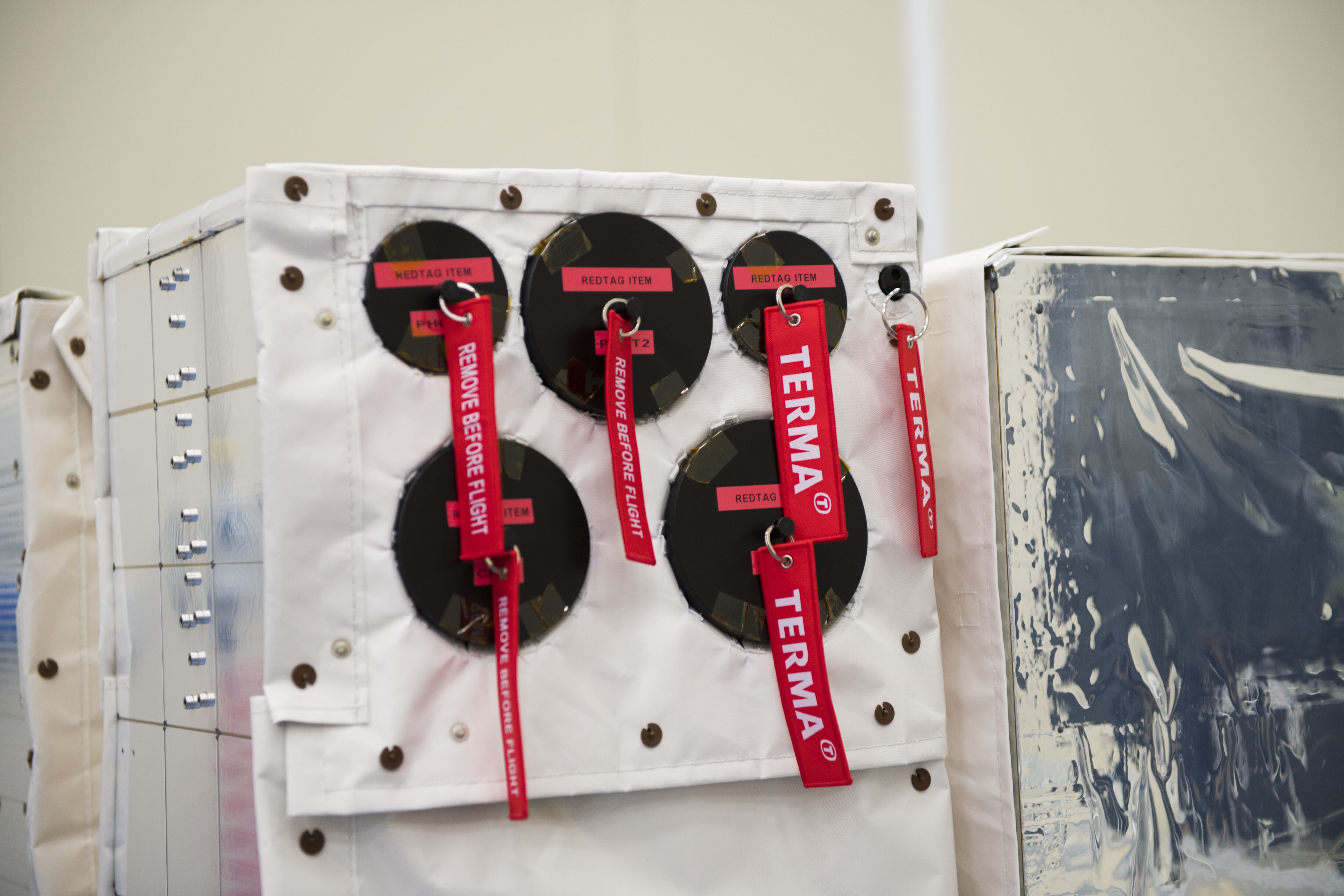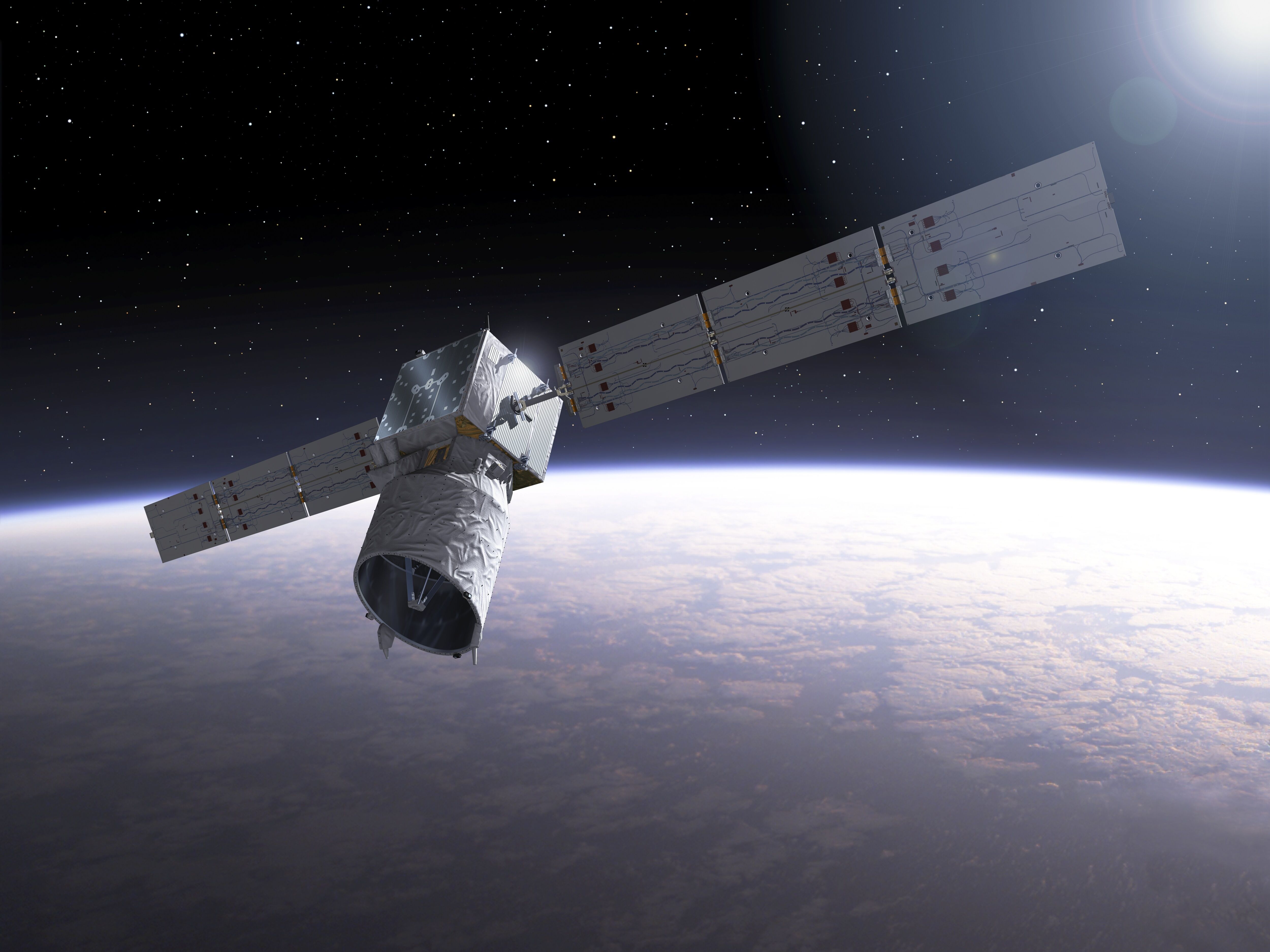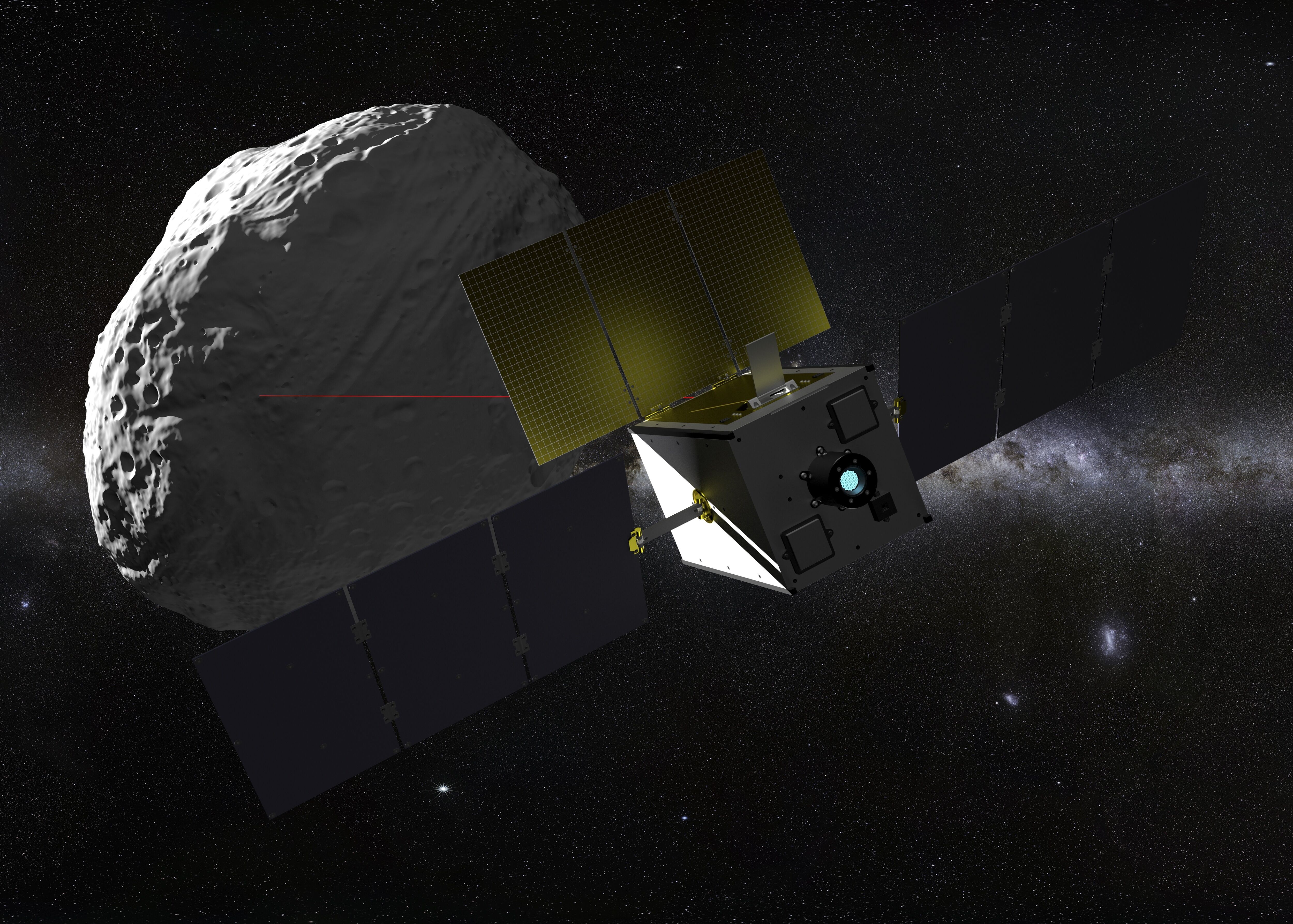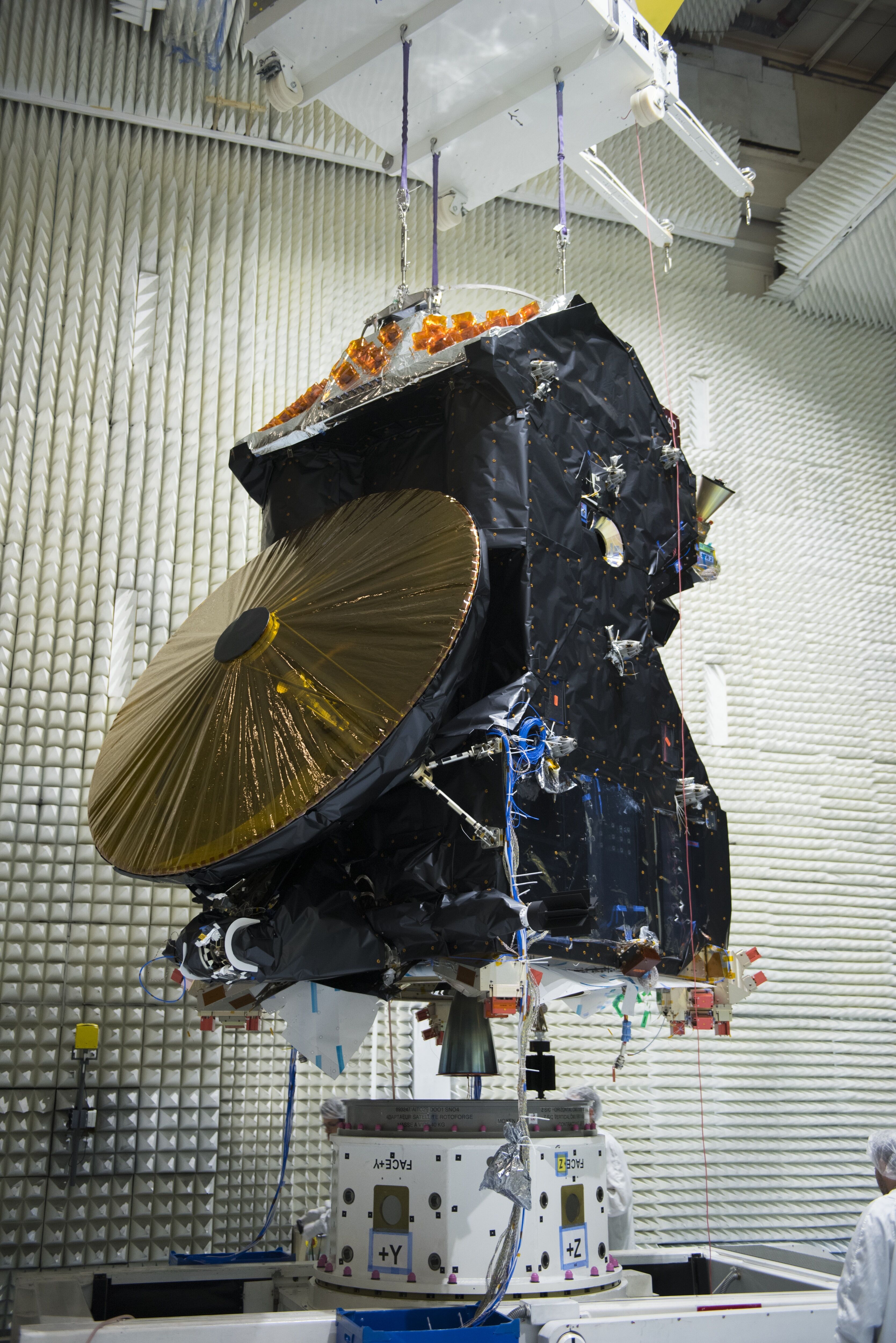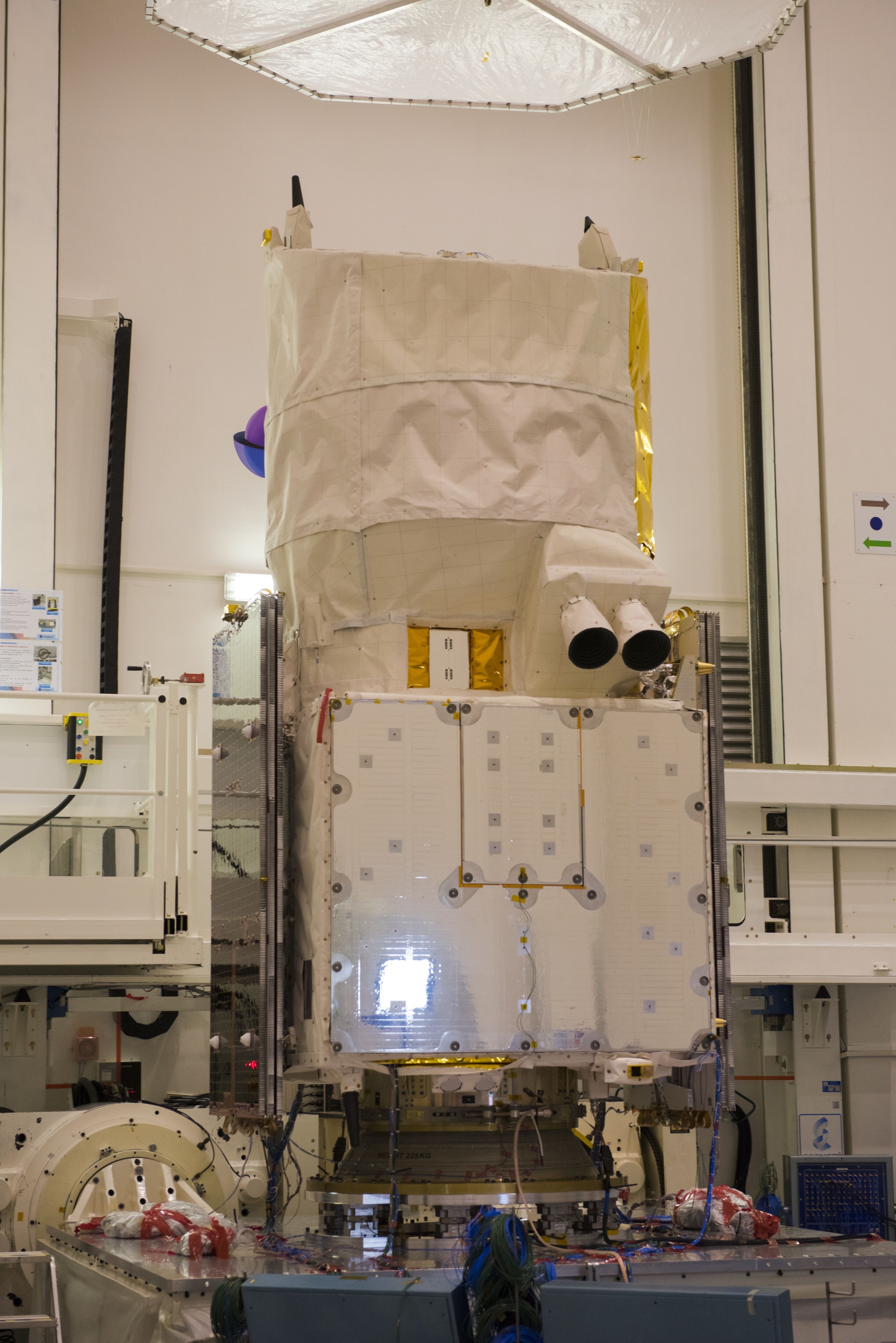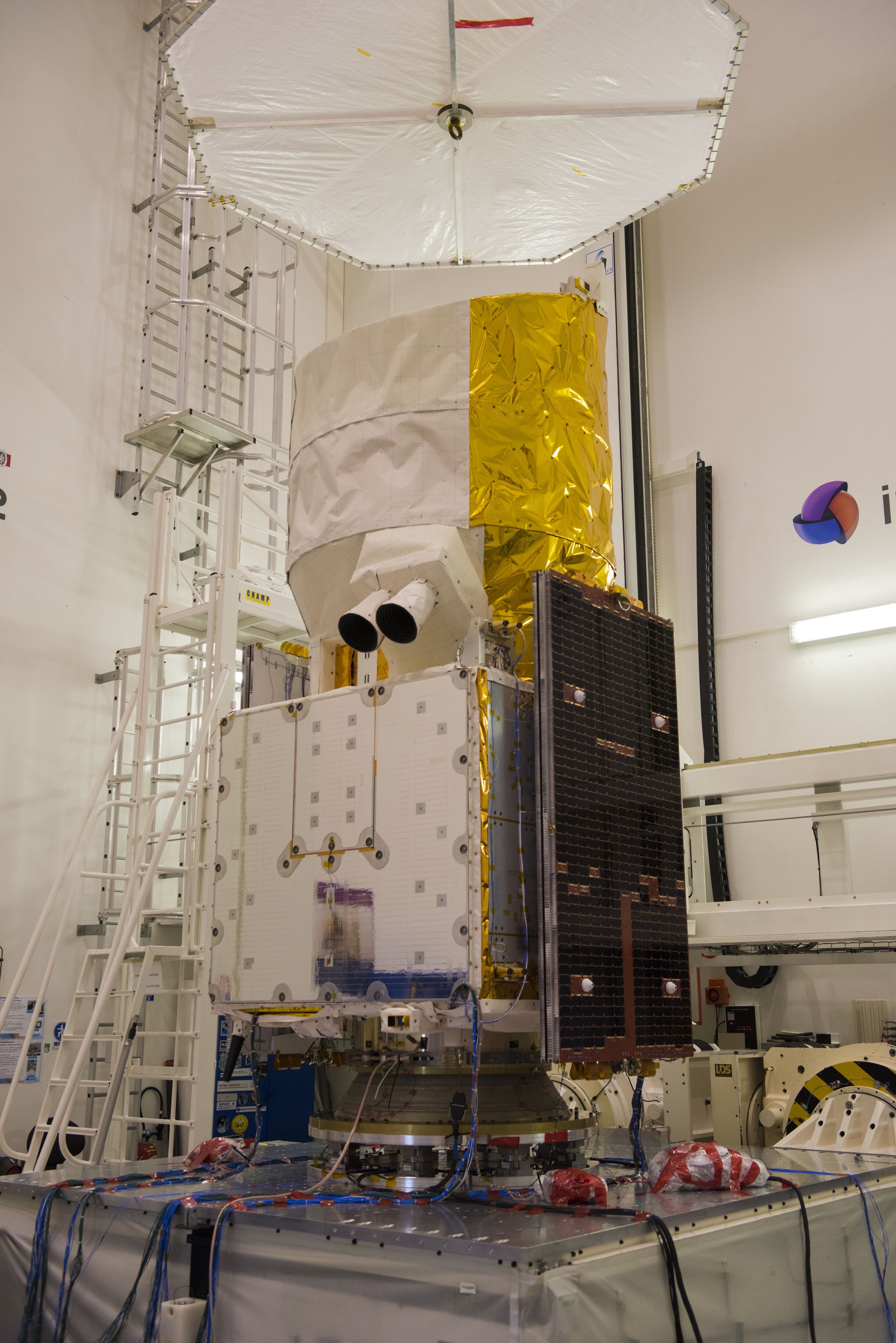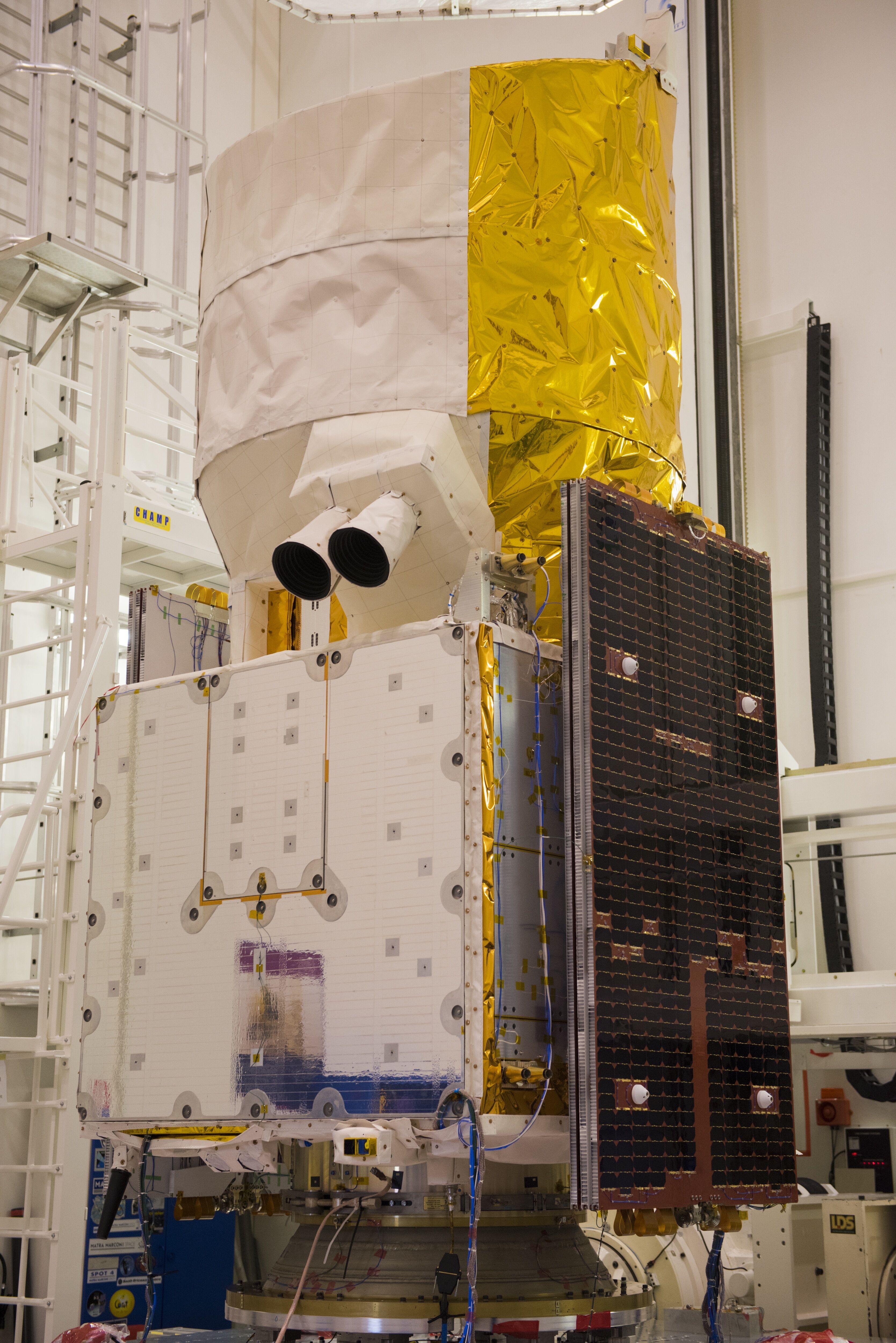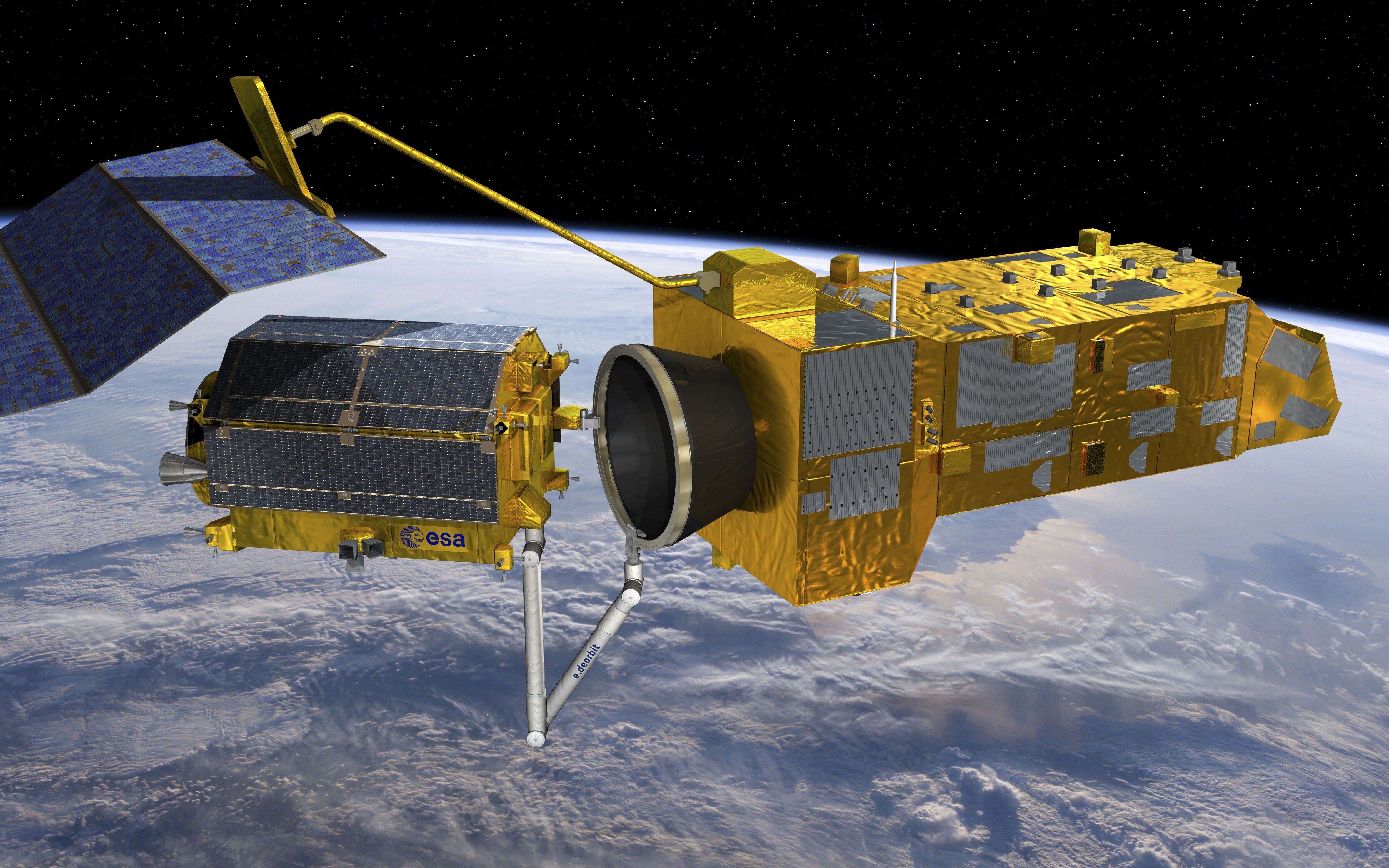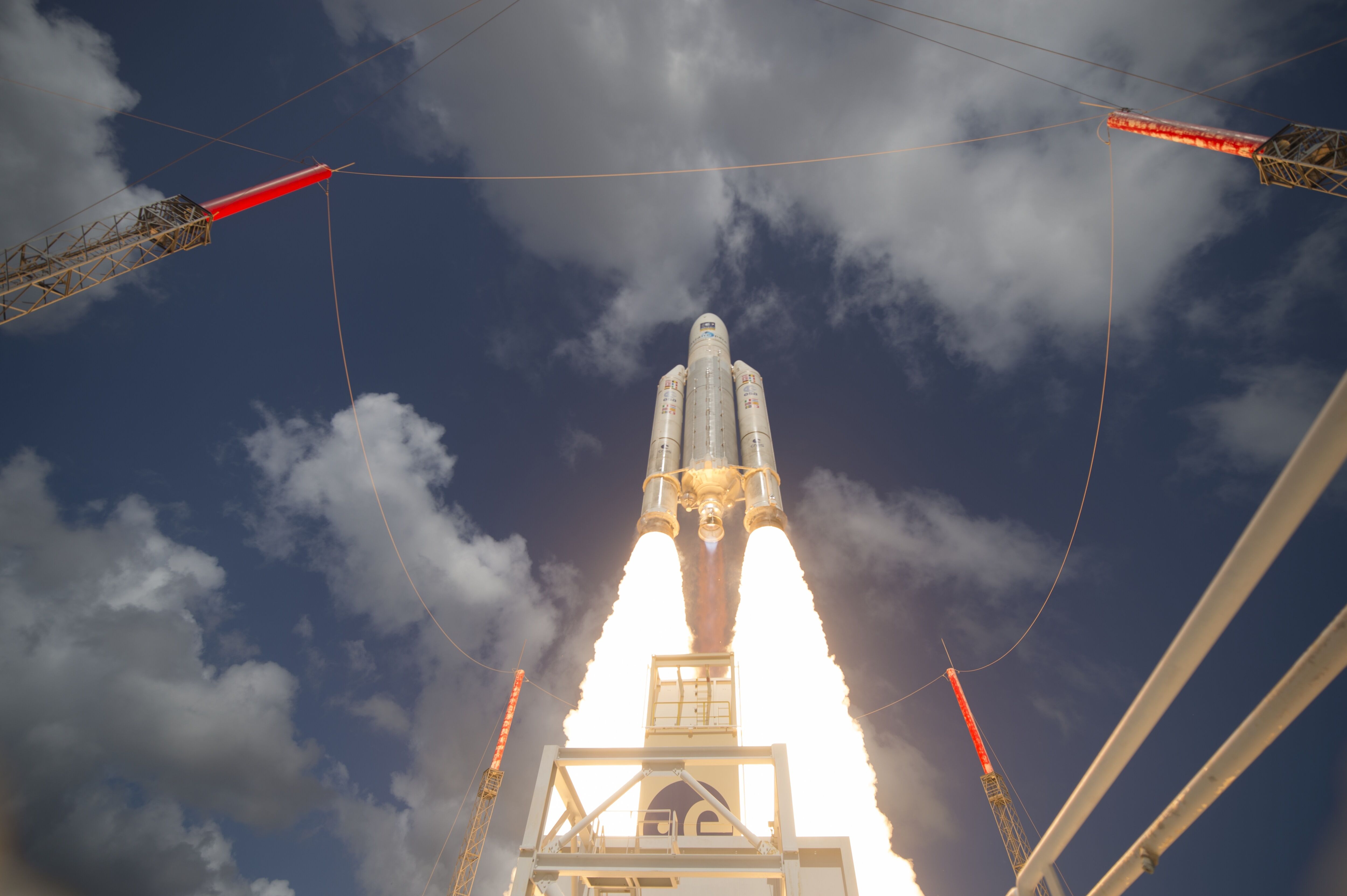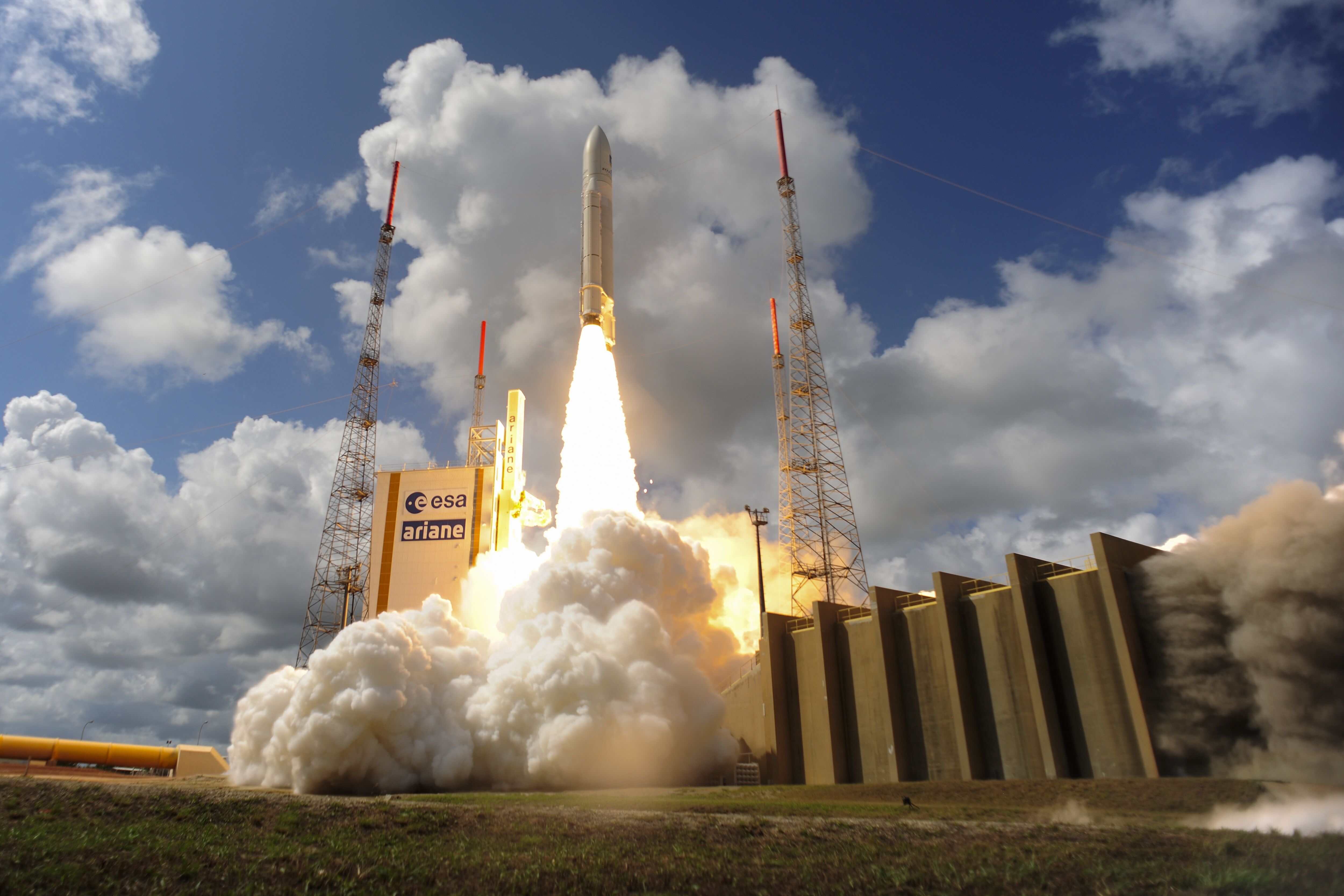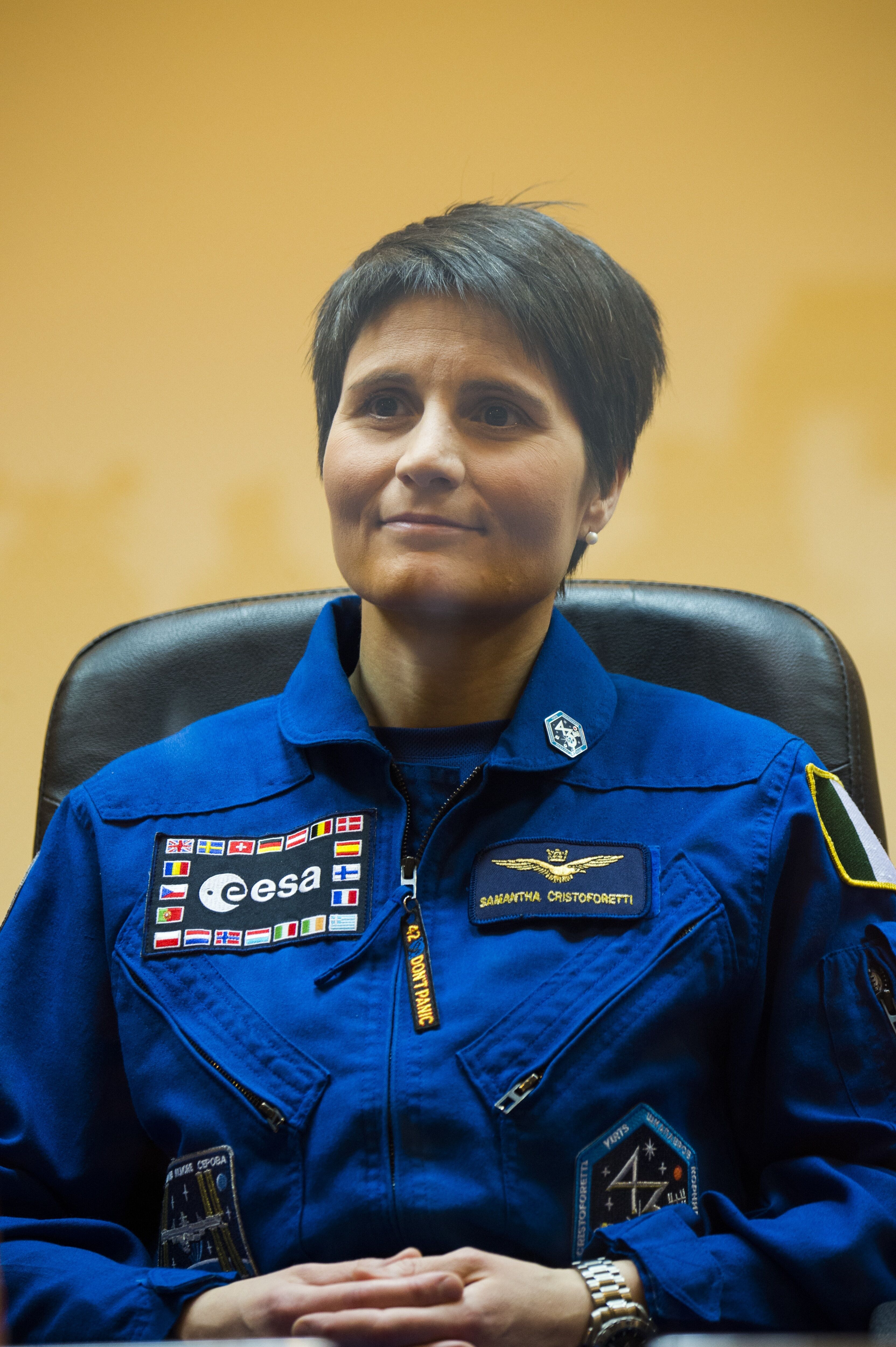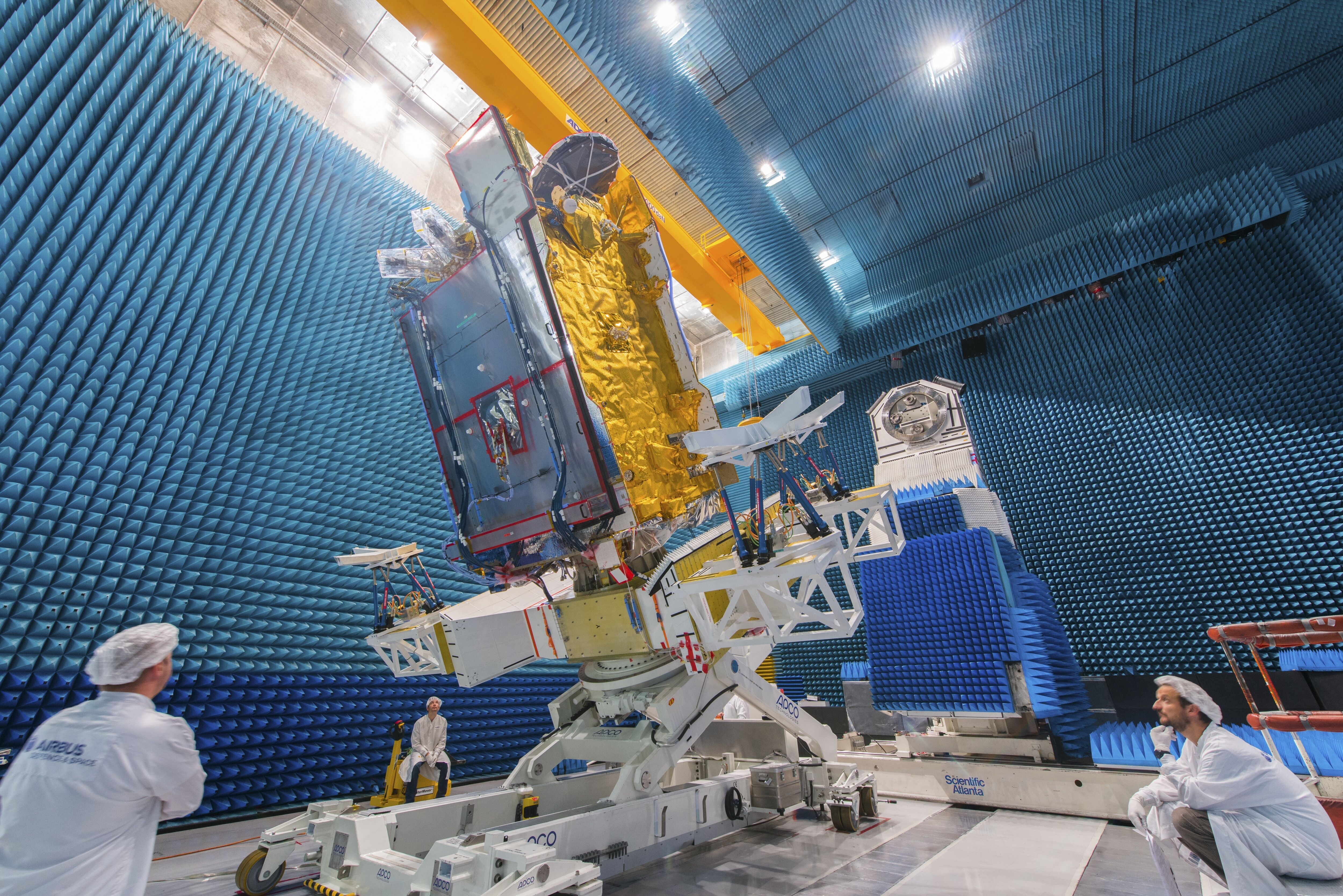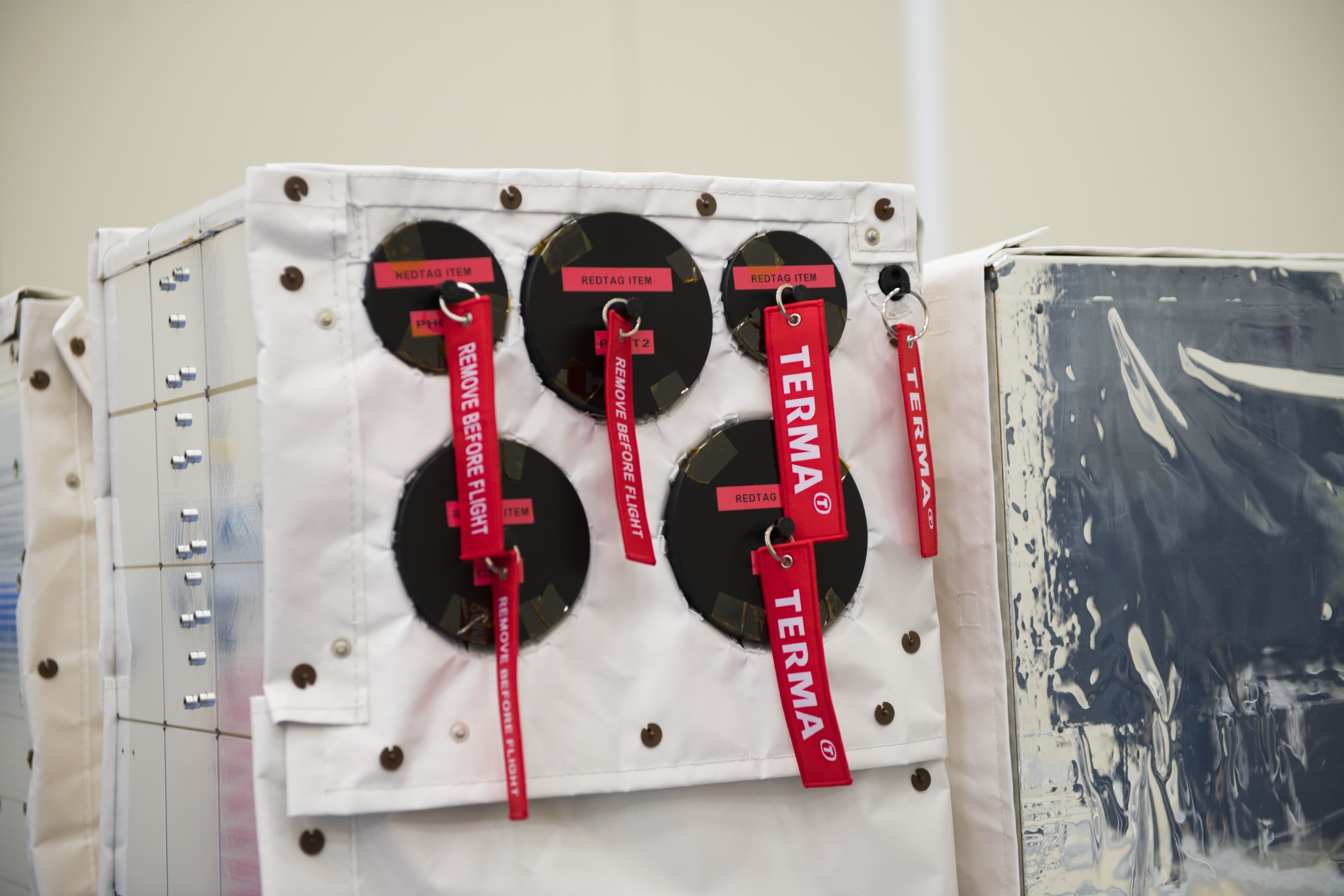
Atmosphere-Space Interactions Monitor (ASIM)
Atmosphere-Space Interactions Monitor (ASIM)
Please sign in to download.
Final checks of the ASIM flight model on the 23rd of November 2017 in OHB Italia before send off to the Kennedy Space Center. The Atmosphere-Space Interactions Monitor (ASIM) is a collection of optical cameras, photometers and an X- and gamma-ray detector. The sophisticated monitor designed to look for electrical discharges born in stormy weather conditions will be launched to the International Space Station aboard the SpaceX Dragon capsule on 2 April 2018 from Cape Canaveral in Florida, USA. For years, their existence has been debated: elusive electrical discharges in the upper atmosphere were reported by pilots, but these ‘transient luminous events’, also known as red sprites, blue jets, and elves, are difficult to study because they occur above thunderstorms. Satellites have probed them and observations have even been made from mountain tops but their viewing angle is not ideal for gathering data on large scales. Then, in 2015, ESA astronaut Andreas Mogensen managed to record many kilometre-wide blue flashes around 18 km altitude, including a pulsating blue jet reaching 40 km from the International Space Station. A video recorded by Andreas as he flew over the Bay of Bengal at 28 800 km/h shows the electrical phenomena clearly – a first of its kind. The Space Station’s low orbit proved again to be the vantage point from which a large part of Earth along the equator could be observed and these sprites and jets could be captured. Researchers want to investigate the relationship between terrestrial gamma-ray bursts, lightning and high-altitude electric discharges across all seasons by tracking and collecting data continuously for at least two years. Aside from being a little-understood phenomenon and part of our world, these powerful events can reach high above the stratosphere and have implications for how our atmosphere protects us from space radiation. ASIM is international project funded by ESA and led by scientists from the Danish Technical University (DTU Space), the Birkeland Centre for Space Science of University of Bergen (NO), the University of Valencia (ES) and the Commissariat à l'énergie atomique et aux énergies alternatives (CEA, France). The industrial team that built the payload was led by Terma A/S (DK), with major contributions from DTU Space (DK), University of Bergen (NO), University of Valencia (ES), and the Space Research Centre of Polish Academy of Sciences (PL). ASIM was successfully launched on the 2nd of April 2018 at 10:30 pm (CET).
